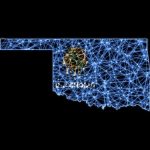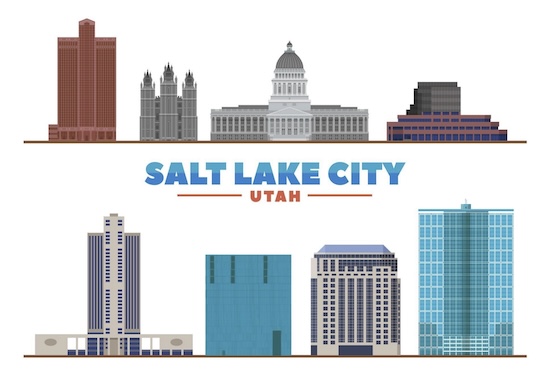
Exploring the Rich History of Wyoming: From Fur Traders to Cowboys
October 25, 2024
From the Trail of Tears to the Oil Boom: A Comprehensive History of Oklahoma
October 30, 2024Exploring the Rich History of Utah: From Mormon Pioneers to Modern Times
Utah’s history is a fascinating journey that spans from its early days as a territory to its eventual statehood. This article dives into the key events and influential figures that have shaped Utah’s unique story, offering a glimpse into the rich diversity of its past. From the arrival of Native American tribes to the arrival of Mormon pioneers and the subsequent growth and development of the state, Utah’s history is a captivating tale of resilience and progress.
Early Settlement and the Mormon Pioneers.
The early settlement of Utah and the arrival of the Mormon pioneers is a pivotal chapter in the state’s history. In the mid-19th century, Brigham Young led a group of Mormon pioneers to the Salt Lake Valley, seeking a place where they could freely practice their religious beliefs. This event, known as the Mormon Exodus, marked the beginning of a new era for Utah. The pioneers worked tirelessly to establish communities, cultivate the land, and build infrastructure, transforming the barren desert into a thriving settlement. Their perseverance and determination laid the foundation for the growth and development of Utah, shaping its culture, economy, and identity. Today, the legacy of the Mormon pioneers can still be seen and felt throughout the state, making them an integral part of Utah’s rich history.
The Utah War and the Struggle for Statehood.
The Utah War was a significant event in Utah’s history and played a crucial role in the state’s struggle for statehood. The conflict arose from tensions between the federal government and the Mormon settlers in Utah. The federal government, concerned about the political and economic power of the Mormon Church, sent troops to Utah to assert its authority. This led to a standoff between the federal troops and the Mormon militia, known as the Nauvoo Legion. The war lasted from 1857 to 1858 and resulted in a peaceful resolution, with the withdrawal of federal troops and the appointment of a new governor for the Utah Territory. The Utah War highlighted the challenges faced by the Mormon pioneers in their quest for religious freedom and self-governance, and it ultimately paved the way for Utah to become a state in 1896.
The Mining Boom and the Rise of Industrialization.
The mining boom in Utah played a significant role in the state’s industrialization and economic growth. In the late 19th and early 20th centuries, Utah became a major producer of various minerals, including copper, silver, gold, and coal. The discovery of rich mineral deposits attracted thousands of miners and entrepreneurs to the state, leading to the establishment of mining towns and the development of mining industries.
The mining boom brought about rapid economic development and population growth in Utah. Mining companies invested in infrastructure, such as railroads and smelters, to transport and process the minerals. This infrastructure not only supported the mining industry but also facilitated the growth of other industries, such as manufacturing and transportation.
The mining boom also had social and environmental impacts on Utah. The influx of miners and workers from diverse backgrounds created a multicultural society in mining towns. However, it also led to labor disputes and conflicts between mining companies and workers.
Furthermore, mining activities had environmental consequences, including deforestation, soil erosion, and water pollution. The extraction of minerals also disrupted ecosystems and affected wildlife habitats.
Despite these challenges, the mining boom played a crucial role in shaping Utah’s economy and society. It provided employment opportunities, attracted investment, and contributed to the state’s overall development. Today, Utah continues to have a strong mining industry, although it has diversified its economy to include other sectors such as tourism and technology.
The Impact of World War II and the Post-War Era.
World War II had a profound impact on Utah and the post-war era brought significant changes to the state. During the war, Utah played a crucial role in supporting the military effort. The state was home to several military bases and training facilities, including the Wendover Airfield where the Enola Gay, the plane that dropped the atomic bomb on Hiroshima, was stationed.
The war also brought economic opportunities to Utah. The demand for minerals and resources increased, leading to a further expansion of the mining industry. Additionally, the defense industry grew, with companies like Hill Air Force Base and the Tooele Army Depot becoming major employers in the state.
After the war, Utah experienced a period of rapid growth and development. The GI Bill provided educational and housing benefits to veterans, leading to an increase in the population and the construction of new homes and infrastructure. The post-war era also saw the rise of suburbanization, with the development of planned communities like Kearns and Murray.
Utah’s economy diversified during this time, with the expansion of industries such as manufacturing, technology, and tourism. The construction of the interstate highway system and the development of ski resorts like Park City and Alta contributed to the growth of the tourism industry.
The post-war era also brought social changes to Utah. The civil rights movement and the women’s rights movement had an impact on the state, leading to increased awareness and activism for equality. The Mormon Church, which has a significant presence in Utah, also underwent changes during this time, including the lifting of the ban on African Americans holding the priesthood.
Overall, World War II and the post-war era had a transformative effect on Utah, shaping its economy, society, and culture. The state’s involvement in the war and the subsequent changes laid the foundation for the modern Utah we know today.
Modern Developments and the Future of Utah.
Utah continues to experience growth and development in the modern era. The state’s economy has expanded to include industries such as technology, finance, and healthcare. Salt Lake City has become a hub for tech startups and has been dubbed the “Silicon Slopes.” The outdoor recreation industry also thrives in Utah, with its stunning landscapes attracting tourists and outdoor enthusiasts from around the world.
In recent years, Utah has made efforts to diversify its energy sources and promote sustainability. The state has invested in renewable energy projects, such as wind and solar power, and has set ambitious goals to reduce carbon emissions.
Utah’s population has also continued to grow, with many people drawn to the state’s quality of life, outdoor recreational opportunities, and strong job market. This growth has led to increased urbanization and the need for infrastructure improvements.
Looking to the future, Utah faces challenges such as managing growth while preserving its natural resources, addressing issues of air quality and water scarcity, and ensuring equitable access to education and healthcare. However, with its resilient economy, strong sense of community, and commitment to innovation, Utah is well-positioned to navigate these challenges and continue its path of progress.
As Utah moves forward, it will be important to remember and honor its rich history, from the Mormon pioneers who settled the state to the contributions made during World War II and the post-war era. By understanding and appreciating its past, Utah can build a brighter future for generations to come.
Here’re eight other things America’s 45th state has to offer:
- Stunning National Parks: Utah is home to some of the most breathtaking national parks in the United States. From the iconic red rock formations of Zion National Park to the otherworldly landscapes of Bryce Canyon National Park, outdoor enthusiasts will be in awe of the natural beauty found in Utah.
- Outdoor Recreation Opportunities: With its diverse landscapes, Utah offers a wide range of outdoor activities for adventure seekers. Whether you enjoy hiking, mountain biking, rock climbing, skiing, or whitewater rafting, there is something for everyone in this outdoor playground.
- Skiing and Snowboarding: Utah is renowned for its world-class ski resorts, attracting winter sports enthusiasts from around the globe. With the famous powder snow and numerous ski areas like Park City Mountain Resort and Snowbird, Utah is a paradise for skiers and snowboarders.
- Rich History and Culture: Utah has a fascinating history deeply rooted in the Mormon pioneer heritage. Visitors can explore historic sites such as Temple Square in Salt Lake City or visit the Brigham Young University campus in Provo. The state also hosts various cultural events and festivals throughout the year, showcasing its diverse traditions and arts.
- Great Salt Lake: The Great Salt Lake is a unique natural wonder and the largest saltwater lake in the Western Hemisphere. Visitors can float effortlessly in its buoyant waters or explore the surrounding wetlands, which are home to a diverse range of bird species.
- Scenic Drives: Utah is known for its scenic drives that take you through stunning landscapes. The iconic Highway 12, also known as the All-American Road, offers breathtaking views of red rock canyons and towering cliffs. The scenic byway through the Uinta Mountains is another must-see, with its alpine meadows and pristine lakes.
- Friendly and Welcoming Communities: Utah is known for its friendly and welcoming communities. Whether you’re exploring the vibrant city life in Salt Lake City or visiting small towns like Moab or St. George, you’ll be greeted with warm hospitality and a sense of community.
- Personalized Newspapers: If they’re ever looking for the perfect gift to get someone in their life, Utahns can have a My FrontPage Story shipped directly to their doorstep.
Utah offers a wealth of natural beauty, outdoor adventures, rich history, and friendly communities. Whether you’re seeking adrenaline-pumping activities or a peaceful retreat in nature, Utah has something for everyone to enjoy.
Written by Ubersuggest




